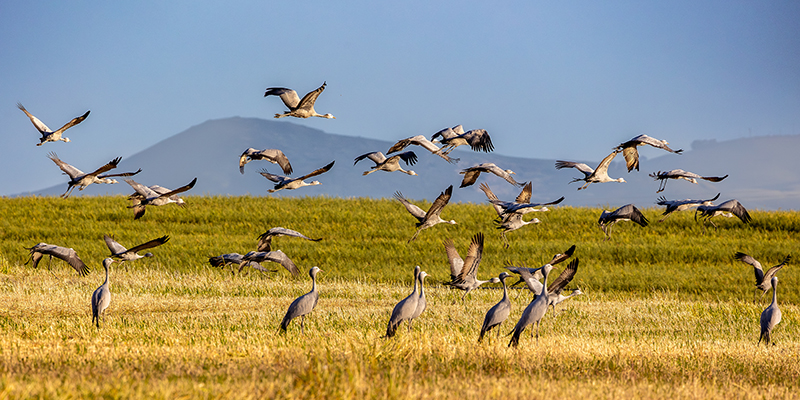The International Crane Foundation, in collaboration with the Endangered Wildlife Trust, has announced registration for one of only six carbon offsetting projects globally using the Voluntary Carbon Market Methodology. This project has the broadest geographical reach in South Africa.
To gain registration, project developers must apply through VERRA, the leading body for climate action and environmental standards. The initiative is facilitated by WeAct, an Australian company specialising in carbon project development and trading.
Carbon offsetting serves as a sustainable financing solution by investing in emission reductions, enhancing livelihoods, and protecting the environment. Carbon credits are sold on the market, with proceeds going to landowners who are financially rewarded for adopting sustainable land management practices that benefit crane habitats and promote biodiversity.
The International Crane Foundation has been active in the Drakensberg region for over 15 years, home to three endangered crane species—Wattled, Blue, and Grey Crowned Cranes. The region faces threats from mining, infrastructure development, invasive species, uncontrolled fires, and agricultural expansion, all of which have diminished crane habitats and pose challenges to local landowners.
“We know these are complex problems, and require innovative solutions. Exploration of the carbon trading market has been one of our key strategies to reduce greenhouse gas emissions through carbon sequestration, to improve the state of these fragile habitats,” said Pieter Both, Carbon and Sustainable Agriculture Project Manager.
Botha said the cost associated with the removal of greenhouse gas emissions to improve the soil is expensive and landowners cannot finance it on their own. This project addresses that financial burden. Removing CO2 from the atmosphere is a cheaper alternative than dealing with the consequences of global warming.
The project, which spans 90,000 hectares (about 222,000 acres), includes nearly 88,500 hectares managed by the Foundation and Trust as a Carbon Management Entity. This Entity engages in biodiversity stewardship agreements with landowners to cover critical areas.
“Carbon trading is not frequently discussed among farmers as it is not part of their daily production cycle on the farm,” said Botha, adding, “For many landowners, this was a foreign idea, and careful negotiation and education is required to explain the complexities of the project. It takes a long time to engage with landowners, explain the benefits of participating in the project, and get them to commit to an agreement.”
This project helps offset the costs of conservation for farmers, who manage large areas of land with diverse species and face numerous challenges without state support. The project involves a four-year cycle of carbon credit verification and issuance, aiming for a 30-year commitment and significant anticipated revenue.
“We believe this approach will mitigate the effects of global warming while creating resilient habitats for our crane population. This pioneering approach will result in increased carbon in the soil, while providing relief to our resilient farmers to protect their livelihoods and create conservationists at the same time,” said Botha.
